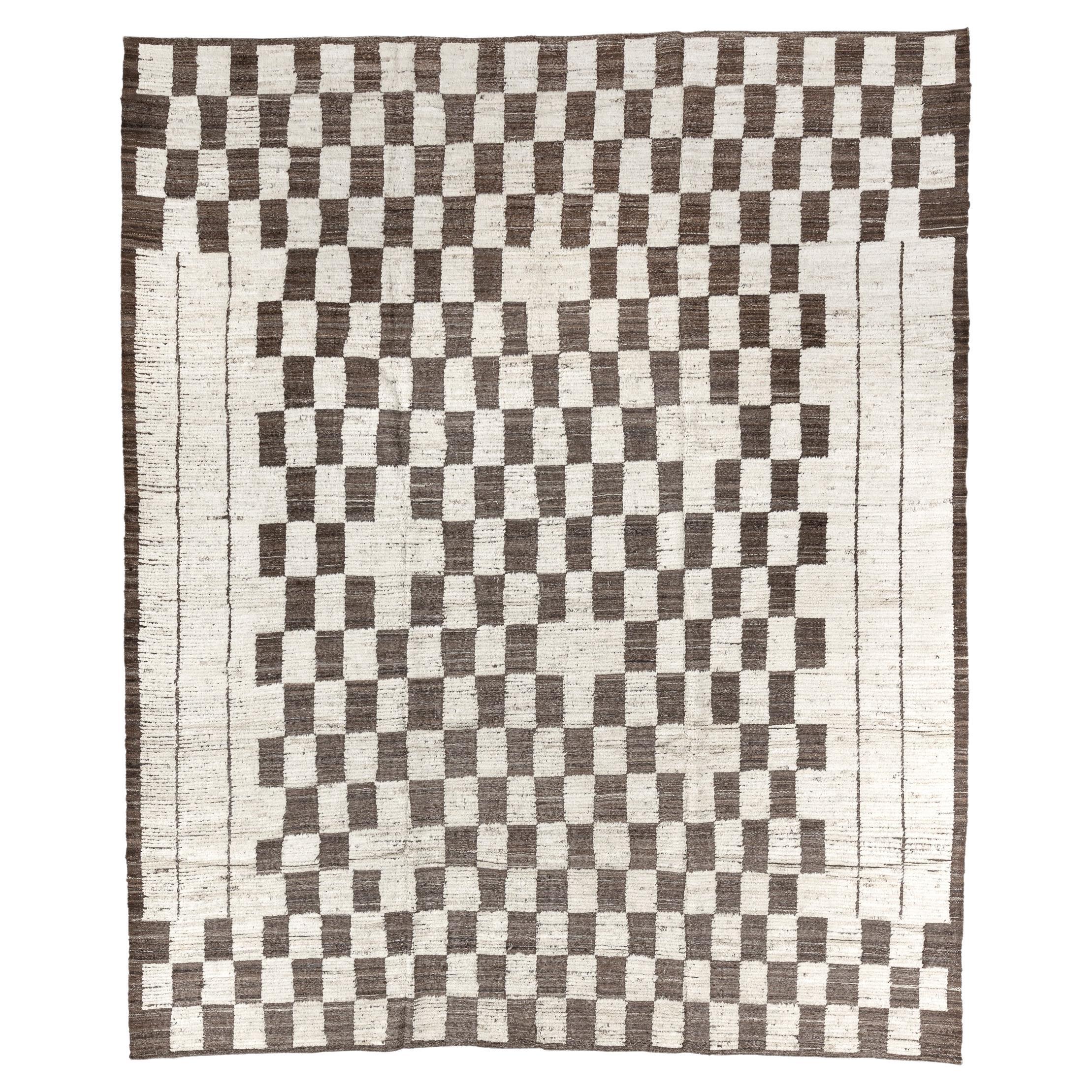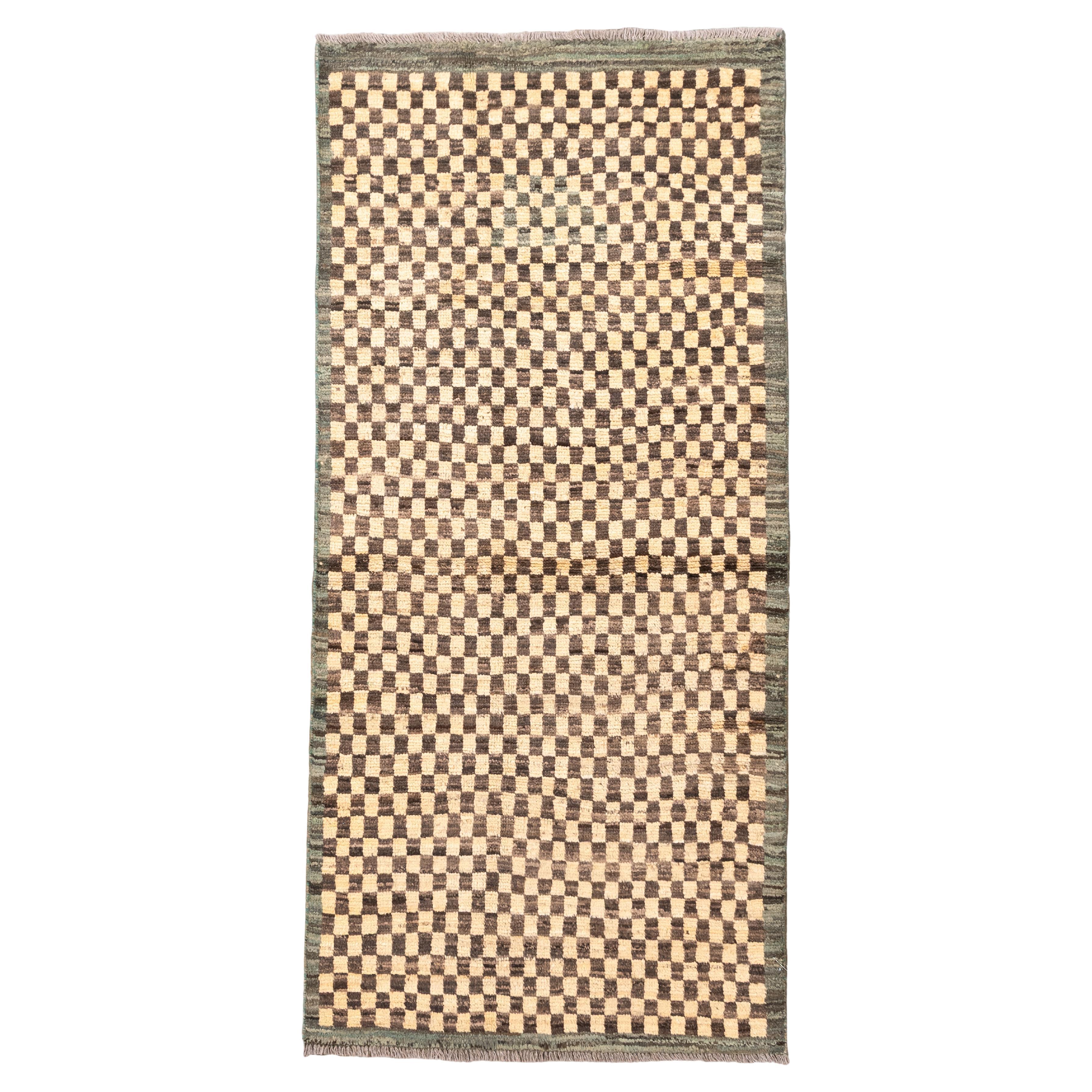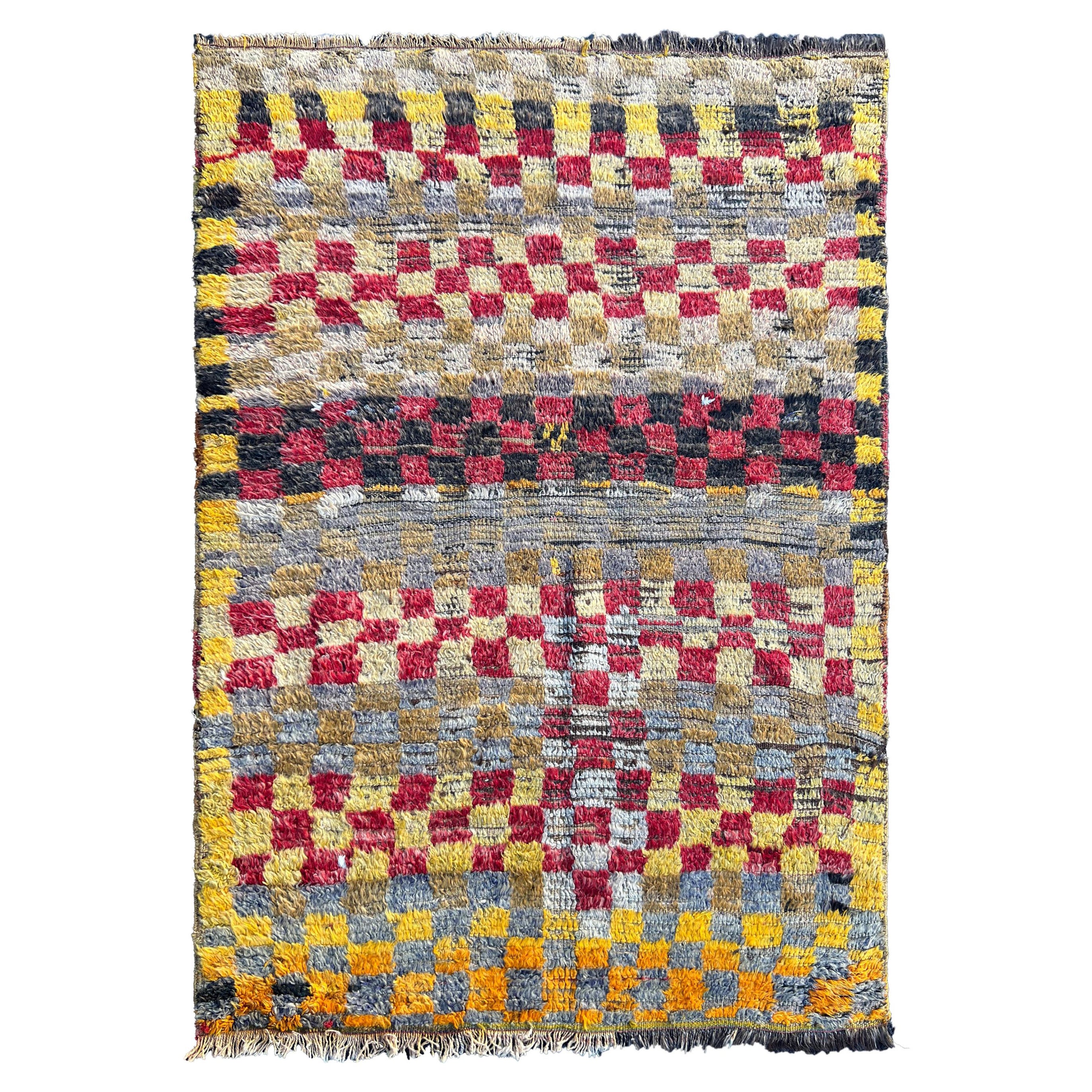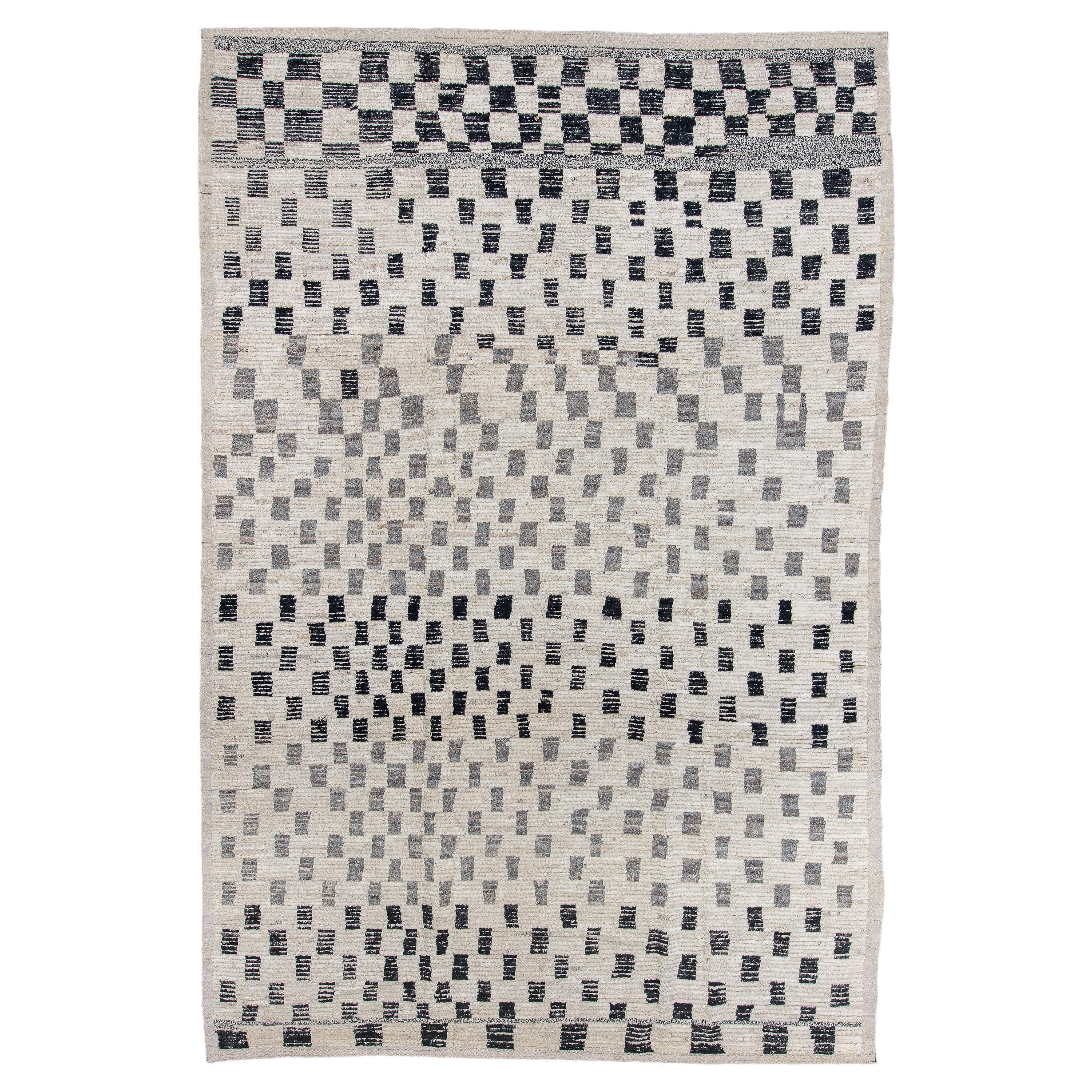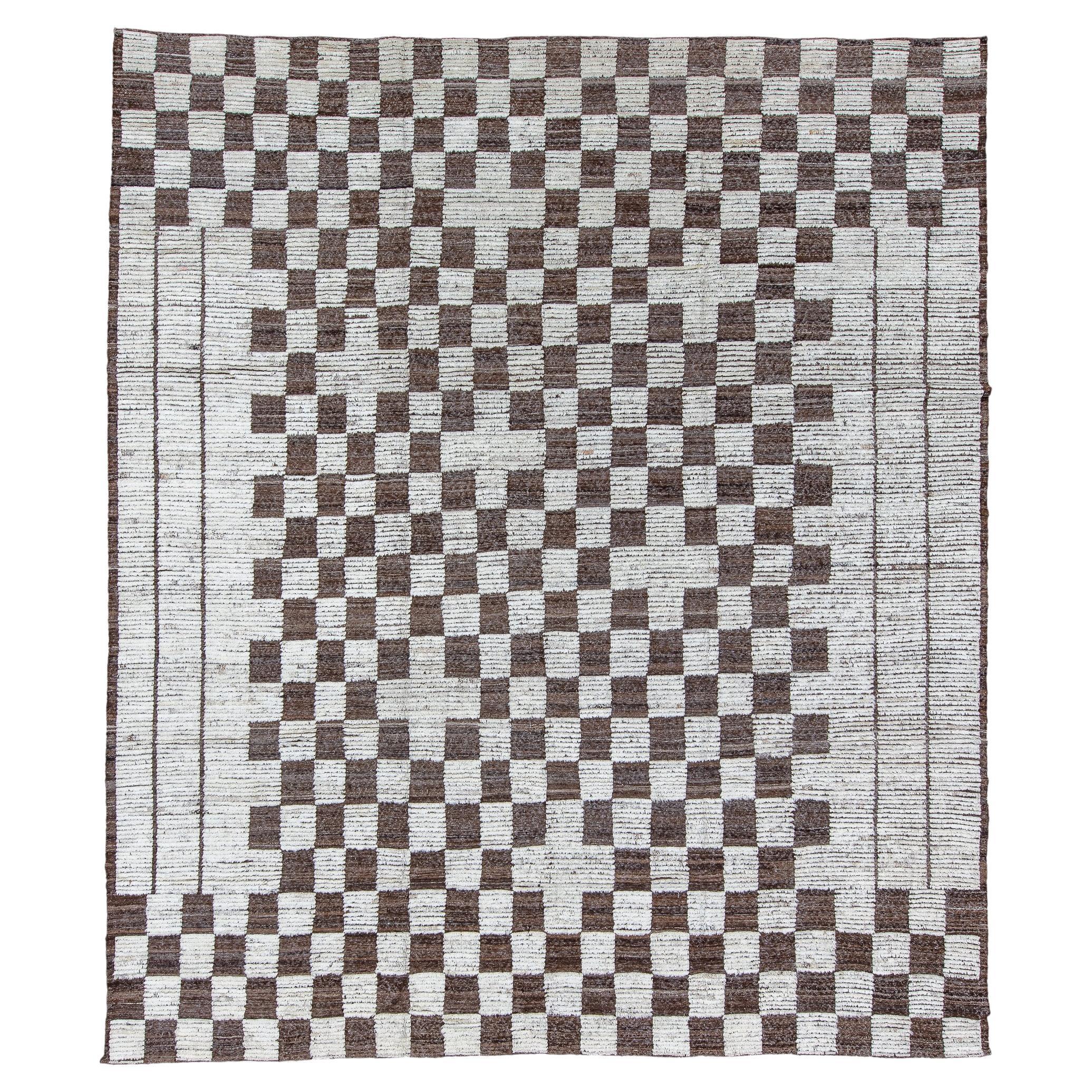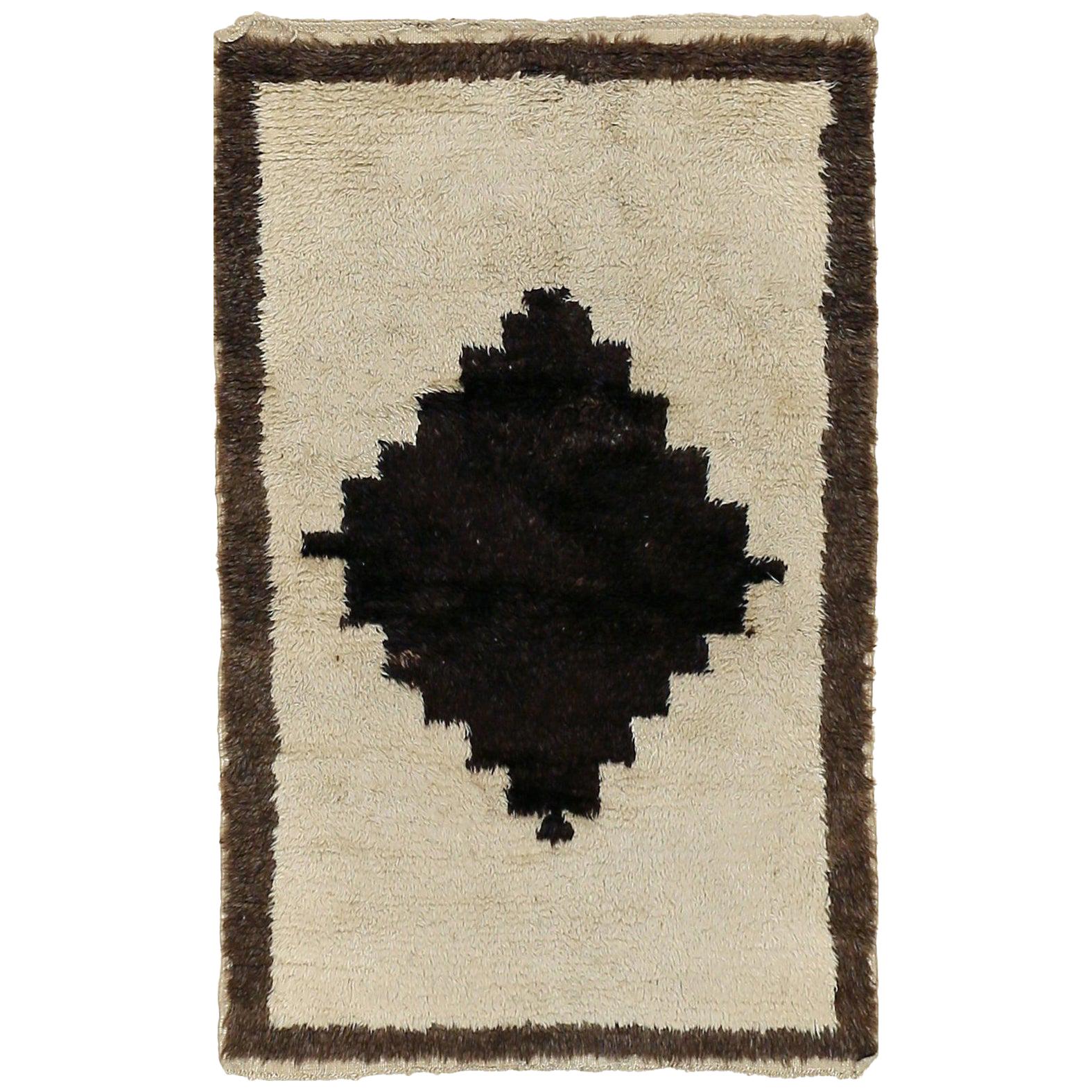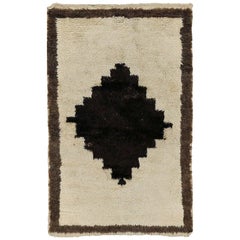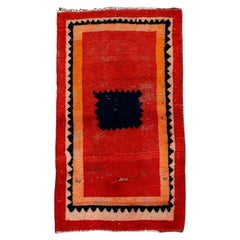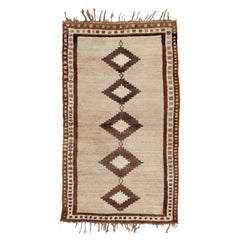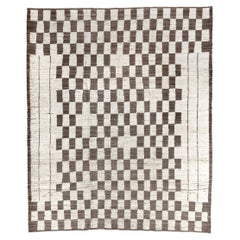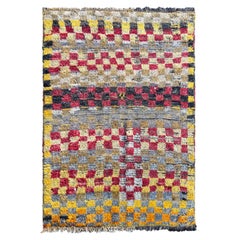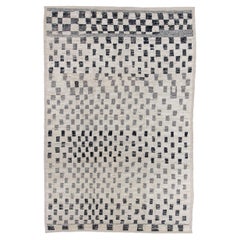Want more images or videos?
Request additional images or videos from the seller
1 of 12
Tulu with Chequerboard Pattern
$2,841.91
£2,132.70
€2,400
CA$3,980.74
A$4,368.26
CHF 2,261.71
MX$52,291.66
NOK 28,375.42
SEK 26,695.81
DKK 18,285.45
About the Item
The Tulu rugs represent one of the earliest forms of nomadic pile weaving, typically knotted with a medium-high pile as they were meant as bedding rugs for the tent. Woven in the Karapinar area in central Anatolia, these are distinguished by the use of fine mohair wool, often undyed like in this case. The patterns are typically quite simple, ranging from completely open fields to stacked niches, with basic geometric patterns like chequerboards constituting some interesting variants.
About the Seller
5.0
Recognized Seller
These prestigious sellers are industry leaders and represent the highest echelon for item quality and design.
Gold Seller
Premium sellers maintaining a 4.3+ rating and 24-hour response times
Established in 1997
1stDibs seller since 2012
211 sales on 1stDibs
Typical response time: 6 hours
- ShippingRetrieving quote...Shipping from: Milan, Italy
- Return Policy
Authenticity Guarantee
In the unlikely event there’s an issue with an item’s authenticity, contact us within 1 year for a full refund. DetailsMoney-Back Guarantee
If your item is not as described, is damaged in transit, or does not arrive, contact us within 7 days for a full refund. Details24-Hour Cancellation
You have a 24-hour grace period in which to reconsider your purchase, with no questions asked.Vetted Professional Sellers
Our world-class sellers must adhere to strict standards for service and quality, maintaining the integrity of our listings.Price-Match Guarantee
If you find that a seller listed the same item for a lower price elsewhere, we’ll match it.Trusted Global Delivery
Our best-in-class carrier network provides specialized shipping options worldwide, including custom delivery.More From This Seller
View AllVintage Geometric Tulu Rug
Located in Milan, IT
The Tulu rugs represent one of the earliest forms of nomadic pile weaving, typically knotted with a medium-high pile as they were meant as bedding rugs for the tent. Woven in the Kar...
Category
Vintage 1930s Turkish Tulu Turkish Rugs
Materials
Wool
Vintage Minimalist Graphic Tulu Rug
Located in Milan, IT
A highly graphic vintage tribal rug, distinguished by red field embellished by a blue central device with a zig-zag profile. Rugs of this type are repr...
Category
Mid-20th Century Turkish Tulu Turkish Rugs
Materials
Wool
Antique Geometric Design Tribal Rug in Camel Hair and Mocha Neutral Colours
Located in Milan, IT
A truly elegant Kurdish Anatolian tribal rug from eastern Turkey distinguished by the use of natural, undyed camel hair for the background. It's sparsely decorated by a sequence of five conjoined diamond medallions with stepped outlines in tones of chocolate brown and ivory. The combination of a restrained palette and a minimalist design results in a very refined weaving of clear Modernist flavour, which can be easily placed in a contemporary design room setting. A real masterpiece of antique tribal...
Category
Early 20th Century Turkish Tulu Turkish Rugs
Materials
Wool
Vintage Tribal Geometric Design Rug
Located in Milan, IT
The naive character of this charming, diminutive tribal rug is exactly what distinguishes it from the plethora of commercial oriental rugs. The diamond design field is completely fil...
Category
Mid-20th Century Turkish Tulu Turkish Rugs
Materials
Wool
Antique Cappadocian Zili Flat-Weave Rug
Located in Milan, IT
Woven in a complex flat-weave technique known as Zili, this superb example originates from the area of Sivrihisar, located in Cappadocia. The background is entirely in wool and the a...
Category
Antique 1880s Turkish Tribal Turkish Rugs
Materials
Cotton, Wool
Old and Unusual Beni Ouarain Berber Rug
Located in Milan, IT
The Beni Ouarain confederation is composed of seventeen tribes inhabiting the high mountain region of the northeastern Middle Atlas. Their rugs differ from other Berber weavings in t...
Category
Vintage 1950s Moroccan Mid-Century Modern Moroccan and North African Rugs
Materials
Wool
You May Also Like
Checkers Board Tulu XL
Located in New York, NY
Turkish origin name for rugs made by villagers for domestic use, often in small sizes, due to loom size restrictions inside homes. They are woven as thick, shaggy rugs using the soft...
Category
21st Century and Contemporary Afghan Tulu Central Asian Rugs
Materials
Wool
$11,750
Vintage Turkish Tulu with Checkerboard Pattern
Located in New York, NY
Minimal yet full of texture, this vintage Turkish Tulu rug features a striking checkerboard pattern in soft neutral tones. A rhythmic grid of alternating dark brown and beige wool s...
Category
Mid-20th Century Turkish Turkish Rugs
Materials
Wool
3.7x5.6 Ft Antique Turkish Tulu Rug with Checkered Design
Located in Spring Valley, NY
A vintage hand knotted "Tulu" (Turkish word for "long/thick piled") rug from Konya in Central Anatolia, Turkey. 100% natural handspun wool.
Woven by skilled artisans using tradition...
Category
Vintage 1940s Turkish Tulu Turkish Rugs
Materials
Wool
Black Checkered Rectangle Tulu
Located in New York, NY
Turkish origin name for rugs made by villagers for domestic use, often in small sizes, due to loom size restrictions inside homes. They are woven as thick, shaggy rugs using the soft...
Category
21st Century and Contemporary Afghan Tulu Central Asian Rugs
Materials
Wool
Let's Play Chess Tulu
Located in New York, NY
Turkish origin name for rugs made by villagers for domestic use, often in small sizes, due to loom size restrictions inside homes. They are woven as thick, shaggy rugs using the soft...
Category
21st Century and Contemporary Afghan Tulu Central Asian Rugs
Materials
Wool
$11,500
Vintage Turkish Tulu Rug Carpet 4'3 x 6'7
Located in New York, NY
Vintage Turkish Tulu rug carpet, 4'3 x 6'7. Vintage Turkish Tulu rug carpet. Tulu’s are handmade in the Konya area with a thick weave and long pile. The shiny wool and length of the ...
Category
20th Century Turkish Turkish Rugs
Materials
Wool
More Ways To Browse
Vintage Bedding
Steel Design Table Legs
Twisted Barley Table
Used Office Desks With Drawers
Vintage Danish Extendable Table
Vintage Tea Plate
19th Century Trestle Table
20th Century Metal Rocking Chairs
A Brandt
Aesthetic Movement Majolica
Antique Copeland
Antique Figural Silver
Antique Fish Print
Antique French Work Table
Antique Ironstone China
Antique Kitchen Knife
Antique Lacquer Desk
Antique Prints Spain
